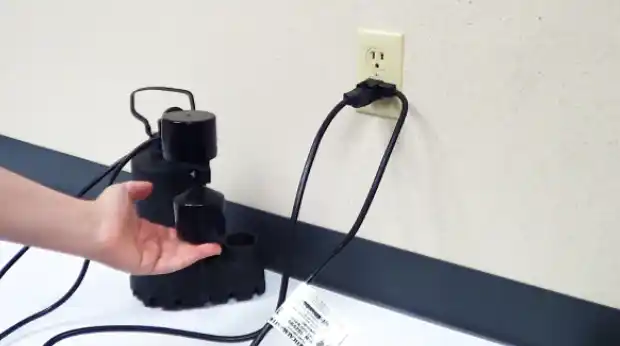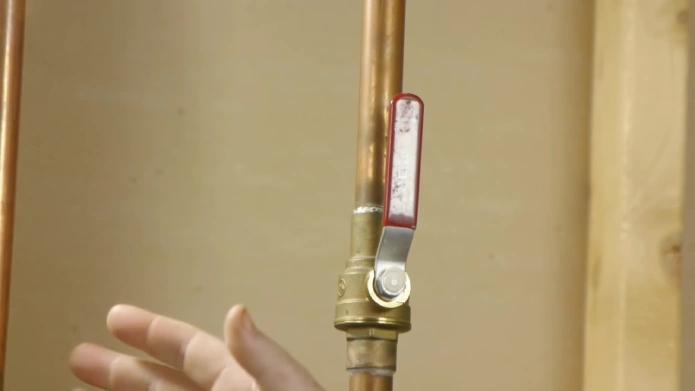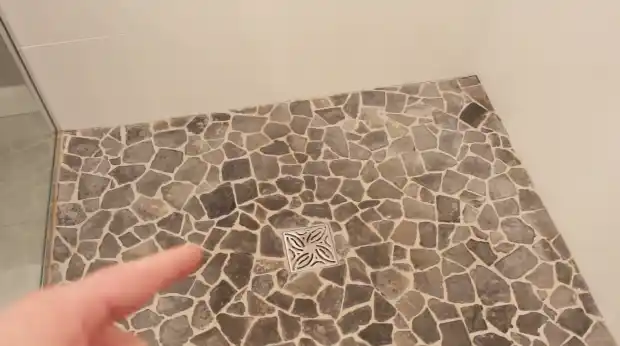Last Updated on May 7, 2023
A sump pump is a crucial device for homeowners, helping to protect their houses from water damage and keep them dry. But how much power does it consume? It really depends on the voltage, horsepower and what kind of electricity source it’s connected to. Each factor can make quite an impact.
Generally, the voltage can make a huge difference when it comes to sump pumps. The higher the voltage, the fewer amps your pump will draw. For instance, a 1/2 horsepower pump at 120 volts typically requires 3.1 amps of power, while the same pump at 115 volts will draw 3.2 amps.
So interested in learning about sump pumps and what affects their power consumption? We’ll explore the intricate details of how much electricity your pump needs to do its job. So keep reading.
How Many Amps Does a Sump Pump Draw: What Factors Impacts?

When choosing the perfect sump pump, deciding which type is best for you can be intimidating. Knowing what factors impact its amperage draw will make picking a size that meets your needs much easier and ensure you have the power needed for proper functioning.
Among the most important factors are the following:
Type of Pump
The type of pump chosen can impact how many amps it draws. It’s usually made for large basins with high flow rates since pedestal pumps have the motor above them. Due to their design, submersible pumps are entirely submerged in water and require less energy to run than pedestal pumps.
But, a pedestal pump draws less amperage than a submersible pump when running normally.
Size of the Pump
The size of the sump pump also affects its amperage draw. Generally speaking, larger pumps require more energy to operate and will therefore draw more amperage than smaller models.
Aside from that, all sump pumps require a certain amount of start-up current, which can range anywhere from 16 to 17 amps depending on the size and type of the pump. After it reaches the average operating speed, its power consumption will decrease and its amperage draw will be lower than it was during start-up.
Voltage and Phase
Voltage and phase affect how much current flows through a motor and can greatly impact its amp draw, as we mentioned earlier. The motor wattage is equal to the voltage multiplied by amps. If you reduce one variable, this will cause an increase in the other variable.
The reduced voltage causes resistance, which draws more current. Improper voltage or phase could result in excess amperage being drawn by the sump pump, leading to higher electricity bills or damage to your electrical system.
Condition of the Pump

The condition of the sump pump is another major factor that impacts its amps draw. Wear and tear from long-term use can cause increased amperage drawn from a damaged or clogged pump as compared to a new one operating under normal conditions.
Furthermore, if your sump pump uses a lot of amperes to run, it might need to be repaired or replaced since it may not need more amps to run.
Pump Head and Flow Rate
Also, your sump pump’s head or lift height and flow rate also play an essential role in determining its amp draw. The higher your pump’s head or flow rate is set, the more amps it will require to run correctly.
Additionally, as pressure increases due to lower flow rates, the motor will require fewer amps while still achieving adequate performance levels.
What Is the Amp Draw of a 1-Horsepower Sump Pump?
A 1HP sump pump typically draws around 8.13 amps on a 120-volt system and 8.87 amps on a 110-volt system. This means it takes approximately 8 to 10 amps of electricity to operate the pump, depending on the voltage.
The amp draw is greater at lower voltages because more current is required to power the same-size motor. If you want to save money on powering your sump pump, it’s best to use 120 volts or higher. By doing so, the device will use less energy and draw fewer amps since it needs less current at these voltages.
How Many Amps Does a 2 HP Sump Pump Take?
A 2 HP sump pump draws up to 16.25 amps on a 120-volt circuit and 17.73 amps on a 110-volt circuit. If you’re using 240 volts, then the amperage draw is much lower at just 8.13 amperes. This makes good sense since twice as much power is required for double the motor size.
But with 240 volts, you get twice as much voltage which helps reduce the amount of current needed for operation. It’s essential to remember that using 240 volts will require specialized wiring, so be sure to speak with an electrician before attempting any installation work.
A 1.5 Hp Sump Pump Uses How Many Amps?

On a 110-volt circuit, 1.5 HP sump pumps draw up to 13.3 amps, while on a 120-volt circuit, it requires 12.19 amps of current to function properly. As mentioned earlier in this answer, using higher voltages helps reduce amperage draw since more electricity isn’t needed to power smaller motors.
This is why switching from 110V to 120V and even up to 240V can provide notable savings in energy consumption over time. Consider upgrading your 1.5HP sump pump wiring from 110V to 120V or, even better yet, 240V for optimal performance levels and lower energy costs.
What Is the Amp Requirement For a 3/4 Horsepower Sump Pump?
A sump pump with 3/4 horsepower operates with 6.09 amperes on 120 volts and 6.64 amps on 110 volts in single-phase circuits. As with any other electric motor, raising its voltage can reduce its required amperage accordingly.
For instance, at 240 volts, it only needs 3 ohms of current (which is significantly lower than what it needs at half that voltage). This is again due to Ohm’s law: Voltage = Current x Resistance. According to this rule, doubling a circuit’s voltage will halve its current draw if the resistance is constant.
How Big Should the Generator Be to Run a Sump Pump?
The size of the generator you need to run a sump pump will depend on the horsepower of the pump, as well as the voltage of your power system. Generally, you’ll need a generator with at least 3-4 KW of output power for most well sump pumps.
This should be enough to start the pump and keep it running. Regarding backup power supplies, you may also want to consider something larger than 4 KW for increased reliability or if your good pump has higher power requirements.
The type of motor your pump uses will also determine how big your generator needs to be to handle the startup surge peak load.
Is It Possible to Plug a Sump Pump Into a Regular Outlet?

Believe it or not, you don’t need a special outlet to run your sump pump. The standard household plug will do just fine. Most sump pumps come with a three-prong cord that can be plugged directly into any 110-volt outlet.
However, the outlet must be protected from water and other liquids since these can easily trip the GFCI circuit and cause the power supply to shut off. For safety reasons, the sump pump must have a continuous power supply.
Therefore, outlets near water should not have GFCI protection as this will shut off the power supply if any water or other liquid comes in contact with it. Instead, an ordinary 110-volt outlet should be used when plugging in a sump pit.
In addition, outlets located near water should be kept above floor level to ensure that no water can contact them and possibly trip the circuit breaker.
Does the Amperage Draw of a Sump Pump Affect Other Electrical Appliances?
A sump pump’s current consumption can cause unexpected power outages or malfunctions in your home’s electrical appliances. If a sump pump isn’t connected to its own circuit, it uses the same power system as other appliances like lights and refrigerators.
This can cause additional strain on the electrical system. As the same system powers more devices, each appliance will require more energy to operate than it would on its own dedicated circuit. It will affect all appliances if the draw exceeds the circuit breaker or fuse.
Further, if two motors run simultaneously on the same line (like a refrigerator and a sump pump), the current draw and voltage drop could be higher due to motor starting currents and harmonics. This could reduce the efficiency of both devices and potentially damage other equipment connected to them as well.
Therefore, it is best to install a dedicated circuit for your sump pump to ensure that it does not affect other electrical appliances in your home.
Prevent Home Water Damage: Know Your Sump Pump Amps
Understanding how many amps a sump pump draws is essential for anyone trying to protect their home from water damage. In general, higher voltages mean fewer amps are required for operation, but different motors of different horsepower can also affect the number of amps drawn from your electrical system.
Knowing these key details can help you choose the most efficient and cost-effective solution for your needs while also protecting your home from potential water damage caused by flooding or storms.
The specifics of sump pumps are now clear to you, so it is easier for you to protect your home.



